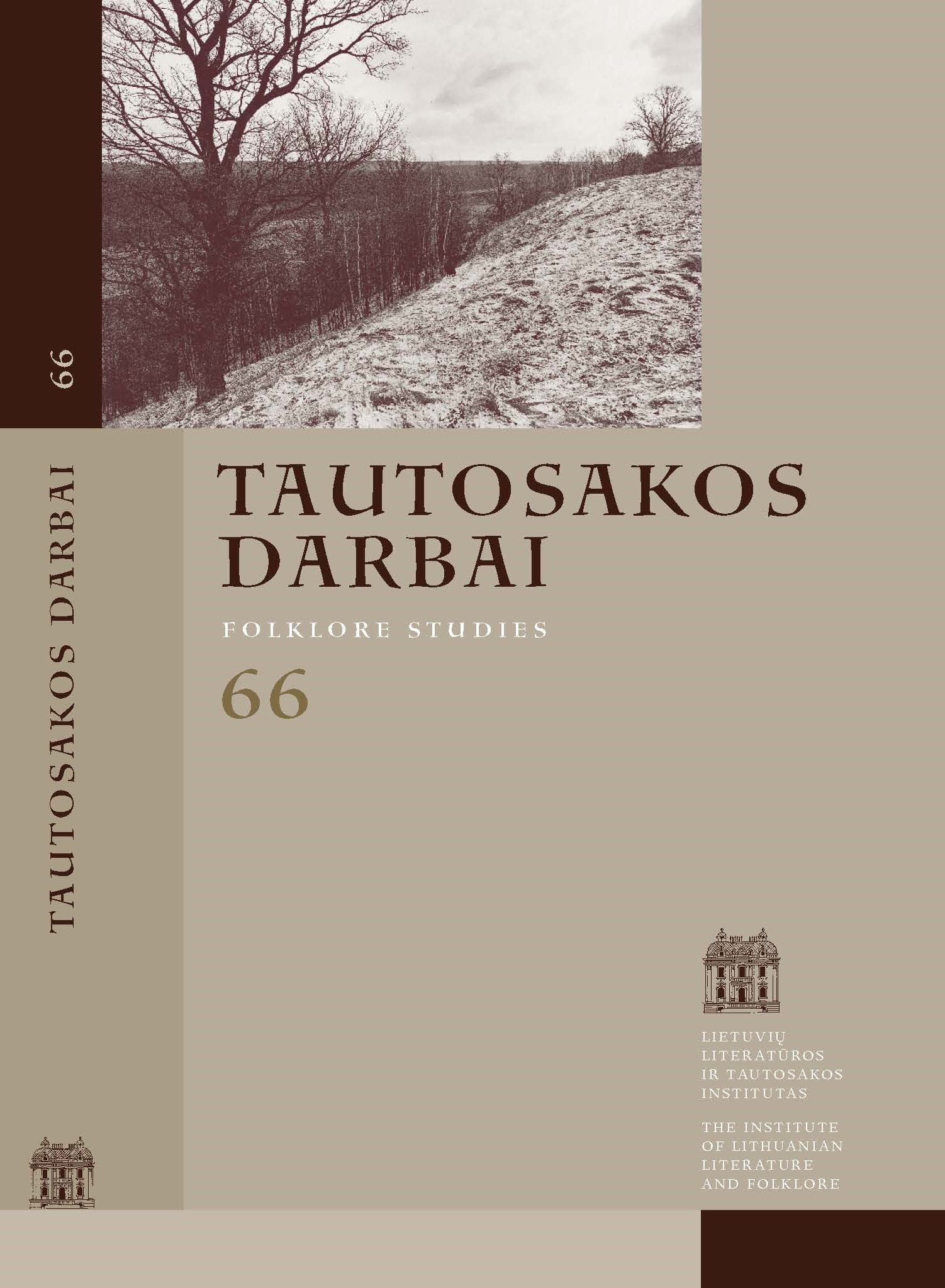Lietuvių stebuklinė pasaka „Sutartis nesiprausti“ (ATU 361): europinis kontekstas ir lokalieji ypatumai
Santrauka
Straipsnyje analizuojama populiari lietuvių stebuklinė pasaka „Sutartis nesiprausti“ (ATU 361), kurios dėmesio centre yra neįprasta žmogaus sutartis su velniu. Žmogus turi sutartą skaičių metų nesilaikyti kūno higienos (nesiprausti, nesikirpti, nesiskusti) – įvykdęs šį reikalavimą jis materialiai apdovanojamas, gauna aukštos socialinės padėties nuotaką. Straipsnyje mėginama atsakyti į klausimą, kodėl velnias prašo tarnaujant nesilaikyti kūno švaros. Kadangi pasaka paplitusi plačiame europiniame areale, glaustai pristatomi kitose tautose žinomi jos variantai. Tyrimas iš dalies peržengia lietuviškos medžiagos ribas, todėl ieškant atsakymo į kai kurių vaizdinių kilmės klausimą pasitelkiami ne tik lietuvių, bet ir kitų tautų papročiai, tikėjimai. Išanalizavus pasaką paaiškėja, kad naratyve vaizduojamą nešvaros laikotarpį galima interpretuoti kaip atskirties, priklausymo nežmogiškajam pasauliui etapą. Tokios atskirties metu suartėjama su anapusinio pasaulio jėgomis. Paskui įvyksta simbolinis atgimimas ir socialinio statuso pokytis. Tai susiję su vyro branda, pereinamuoju į kitą socialinį statusą laikotarpiu – vedybomis. Užkopdamas ant kito socialinio laiptelio, žmogus turi simboliškai apsivalyti. Be to, vyro-nevalos vaizdinys gali slėpti apibendrintą žinią apie keistuolius atsiskyrėlius, išsiskiriančius iš minios nepatrauklia išvaizda ir netipine elgsena.
Gilinantis į šią pasaką išryškėja labai svarbus aspektas – galimas skelbtų pasakos variantų poveikis žodinei tradicijai. Visuotinai išpopuliarėjusį tekstą, galėjusį paveikti šios pasakos variantus kitose tautose, broliai Grimmai paskelbė dar XIX a. pirmoje pusėje (KHM nr. 101). Vokiškasis variantas, tikėtina, paveikė ir lietuviškas pasakas apie žmogaus sandorį su velniu. Grimmų pasaka „Lokio kailis“ lietuviškai pirmą kartą pasirodė 1926 m., vėliau buvo kelis kartus perleista. Analizė parodė, kad bent keturiuose lietuvių pasakos variantuose esama detalių iš Grimmų pasakos ar netgi gana tiksliai atpasakojamas vokiečių pasakos siužetas.

Šis kūrinys yra platinamas pagal Kūrybinių bendrijų Priskyrimas 4.0 tarptautinę licenciją.
Atsisiuntimai
Skaitomiausi šio autoriaus(ų) straipsniai
- Jūratė Šlekonytė, Pasakų sekėja XX–XXI a. sandūroje: subartoniškės Antaninos Čaplikienės atvejis , Tautosakos darbai: T 64 (2022)
- Jūratė Šlekonytė, Pasakų sekėjos moterys ir jų repertuaro ypatumai , Tautosakos darbai: T 67 (2024): Tautosakos darbai
- Jūratė Šlekonytė, Lietuvių pasakų tyrimų šimtmetis: nuo tradicinės komparatyvistikos iki šiuolaikinių metodų , Tautosakos darbai: T 49 (2015)
- Jūratė Šlekonytė, Augustas Schleicheris – pirmasis lietuviškų pasakų skelbėjas , Tautosakos darbai: T 61 (2021)
- Jūratė Šlekonytė, Nauja knyga apie stebuklinių pasakų simbolizmą , Tautosakos darbai: T 67 (2024): Tautosakos darbai
- Jūratė Šlekonytė, Lietuvių liaudies pasakos „Antimi pavirtusi sesuo“ populiarumo fenomenas , Tautosakos darbai: T 57 (2019)
- Jūratė Šlekonytė, Pirmieji fundamentinio čekų pasakų leidinio tomai , Tautosakos darbai: T 64 (2022)
- Vita Džekčioriūtė, Aušra Žičkienė, Jūratė Šlekonytė, Gražina Kadžytė, Jurgita Ūsaitytė, Lina Būgienė, Daiva Vyčinienė, Kronika , Tautosakos darbai: T 48 (2014)
- Jūratė Šlekonytė, Lietuvininkų sakmės apie laukinę medžioklę: vaizdinio kilmės klausimu , Tautosakos darbai: T 47 (2014)
- Jūratė Šlekonytė, Ar mums reikia pasakų? Atsakymą duoda Bruno Bettelheimas , Tautosakos darbai: T 55 (2018)
